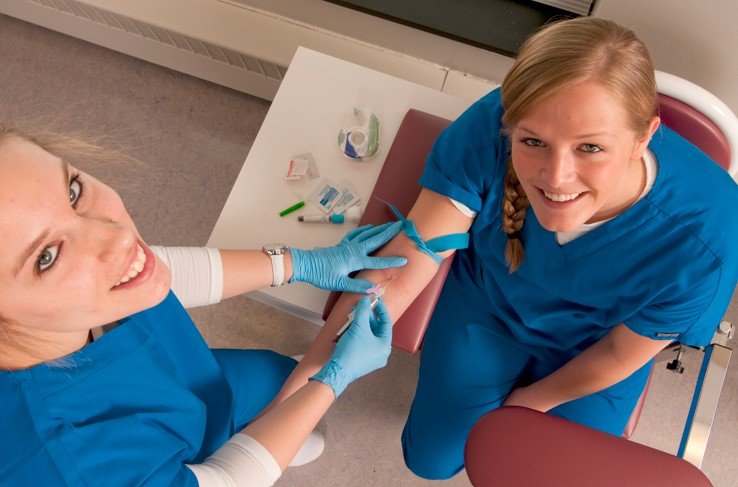Challenges and Strategies for Acquiring Anticoagulants in US Hospitals
Summary
- Hospitals in the United States are facing challenges in acquiring anticoagulants used in blood collection tubes due to various Supply Chain issues.
- The demand for anticoagulants has increased significantly, leading to shortages and delays in acquiring these essential supplies.
- Supply Chain management strategies and partnerships with suppliers are crucial for hospitals to overcome these challenges and ensure the availability of anticoagulants for patient care.
The Importance of Anticoagulants in Hospitals
Anticoagulants play a crucial role in healthcare settings, particularly in hospitals where blood collection tubes are used for various diagnostic purposes. These tubes contain anticoagulants to prevent blood clotting and ensure accurate Test Results. Without adequate supplies of anticoagulants, hospitals may face delays in diagnostic testing, compromised patient care, and increased Healthcare Costs.
Current Supply Chain Challenges
Increased Demand
One of the primary challenges faced by hospitals in the United States is the increased demand for anticoagulants. The demand for these essential supplies has surged due to various factors, including the growing aging population, an increase in chronic diseases, and the rising number of Diagnostic Tests being performed in healthcare facilities.
Shortages and Delays
The spike in demand for anticoagulants has led to shortages and delays in acquiring these critical supplies. Hospitals are struggling to maintain adequate inventory levels, leading to disruptions in blood collection tube production and distribution. As a result, Healthcare Providers are facing challenges in conducting timely Diagnostic Tests and providing quality care to patients.
Supply Chain Disruptions
Supply Chain disruptions, such as transportation delays, manufacturing issues, and raw material shortages, are also contributing to the challenges faced by hospitals in acquiring anticoagulants. These disruptions can have a significant impact on the availability of essential supplies, affecting patient care and operational efficiency in healthcare facilities.
Strategies for Overcoming Supply Chain Challenges
Collaboration with Suppliers
One of the key strategies for hospitals to overcome Supply Chain challenges is to collaborate closely with suppliers of anticoagulants. Building strong partnerships with reliable suppliers can help healthcare facilities secure a stable and timely supply of these essential supplies. By working together with suppliers, hospitals can address issues such as demand forecasting, inventory management, and Supply Chain resilience.
Supply Chain Management Tools
Implementing Supply Chain management tools and technologies can also help hospitals streamline their procurement processes and enhance Supply Chain efficiency. Advanced software solutions, such as inventory management systems, demand forecasting tools, and supplier collaboration platforms, can enable Healthcare Providers to optimize their Supply Chain operations and better manage the acquisition of anticoagulants.
Diversification of Suppliers
Another effective strategy for hospitals is to diversify their supplier base for anticoagulants. Relying on multiple suppliers can help healthcare facilities mitigate the risks of Supply Chain disruptions and shortages. By working with a diverse network of suppliers, hospitals can enhance their procurement flexibility and ensure a consistent supply of anticoagulants for patient care.
Conclusion
In conclusion, hospitals in the United States are facing significant Supply Chain challenges in acquiring anticoagulants used in blood collection tubes. The increased demand, shortages, and Supply Chain disruptions are hindering healthcare facilities' ability to secure these essential supplies for patient care. To overcome these challenges, hospitals must implement proactive Supply Chain management strategies, collaborate with suppliers, leverage technology solutions, and diversify their supplier base. By addressing these challenges effectively, hospitals can ensure the availability of anticoagulants and maintain high standards of care for patients.

Disclaimer: The content provided on this blog is for informational purposes only, reflecting the personal opinions and insights of the author(s) on the topics. The information provided should not be used for diagnosing or treating a health problem or disease, and those seeking personal medical advice should consult with a licensed physician. Always seek the advice of your doctor or other qualified health provider regarding a medical condition. Never disregard professional medical advice or delay in seeking it because of something you have read on this website. If you think you may have a medical emergency, call 911 or go to the nearest emergency room immediately. No physician-patient relationship is created by this web site or its use. No contributors to this web site make any representations, express or implied, with respect to the information provided herein or to its use. While we strive to share accurate and up-to-date information, we cannot guarantee the completeness, reliability, or accuracy of the content. The blog may also include links to external websites and resources for the convenience of our readers. Please note that linking to other sites does not imply endorsement of their content, practices, or services by us. Readers should use their discretion and judgment while exploring any external links and resources mentioned on this blog.
